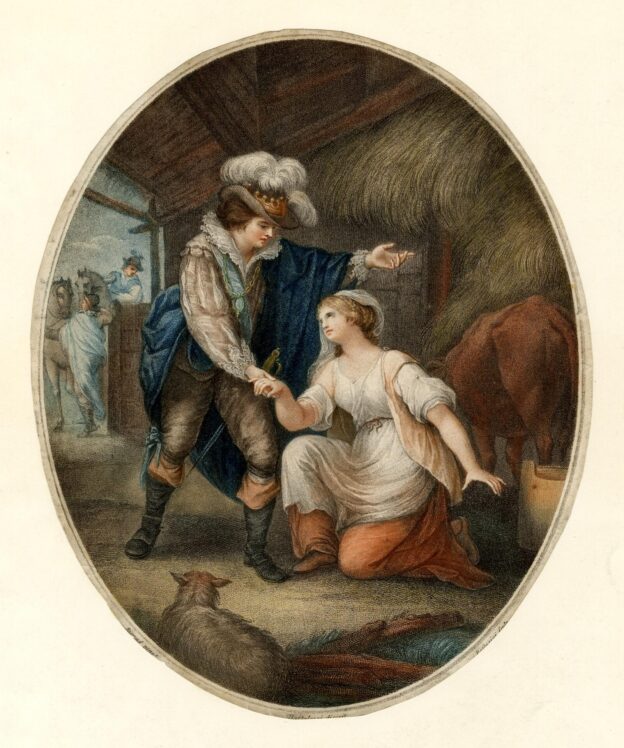As it states on the Syllabus, you will have to do one of the three following options as a presentation. The general requirements for each presentation are the same – you should aim to be informative and interesting, explain the resource, tale, or reading sufficiently, be able to answer basic questions, and engage with the class’s aims, vibes, and themes overall. Each presentation should be in the 5-10 minute range – it is alright to be a little longer or shorter, but that’s the ballpark we’re aiming for.
Option One – the Archive/Resource presentation – My expectations for this presentation are simple: you should pick a resource or archive, fully explain and demonstrate how the resource works or what comprises this archive, and connect it in a meaningful way to the course. The resource or archives should be on something akin to the various digital humanities projects that I’ve outlined on the Syllabus, and reproduced for you at the bottom of the Sheet. You might want to start there, and ultimately may pick one of these resources. As we’ll discuss in this course, Chaucer has come to represent a lot more than just his own life or work – many of these projects and various resources talk about a lot more and do a lot more than discuss one man’s work. And one of the main aims or objectives of this course is to get you thinking more deeply about the archives and how, what, and why we classify as one. The goal of this presentation is to find a resource or archive that speaks to you, and show how it connects and intersects with this course on the Canterbury Tales. Some will be more obviously related than others, but I think there is a way to tie whatever you’re interested in exploring as an archivist-in-training to the material we’re covering. Further, there may be other resources or archives (physical or not) that connect to the Canterbury Tales in a meaningful way – I’m a medievalist by training, so there could be other disciplinary archives or resources that interlock with the course in an interesting manner.
Option Two – The Tales Presentation – This is probably the most obvious presentation topic and most familiar to you all; I want you to take the Tale we’re covering this week and explain your understanding of the tale and introduce something new to the class about the story that they might have missed. This could take a few forms: you can attempt to extrapolate the meaning of the story or a particular passage, explain some of the allusions or references in the tale, you could map out the textual or manuscript history of the tale, you could explain some of the sources and analogues Chaucer might have used to construct the narrative – there are many different ways to do this work of “unpacking” the Tale. Whatever you decide to do to “unpack” the tale you must remember that you are not summarizing the tale. This is not an option to simply repeat Cliffsnotes back to me – you need to go a step beyond the literal “what happened” and explain a bit about what you saw in the tale or learned about the tale, beyond what is literally printed on the page. While I would like a bit of a demonstration or presentation – be it slides, a handout, or other prop – you do not need to make a full show of this. The point is largely to prime the class for a good discussion of the tale’s merits and interesting angles.
Option Three – The Literature or Criticism Presentation – As graduate students, you are no doubt familiar with the concept of academic research and reading professional scholarship and theory. I hope by this point you’ve learned a little bit of how to read an article, because that is what is at the core of this presentation: you will take one of the various secondary sources on the tale of the week, and present it. Remember, not everyone will have read or engaged with the criticism as deeply as you will – so you do need to do a little summarizing of main points or theses. But, and this is the key skill, you need to go beyond explaining the argument and engage with it on a deeper or more theoretical level. You might do this by highlighting how an article misunderstands or misreads a particular passage, or you could explain why a particular theoretical approach does or does not add to our understanding of the narrative, or even simply outlining why you think this article matters and is worthwhile to engage with. The point is that you demonstrate real engagement with the critical literature of this tale.
Collaboration/Working Together: We are lucky to have such a large class this semester – however, that does mean we have more students than available presentation slots. As such, you may wish to work together on presentations. Alternatively, if you want to work together with the other people presenting on your day and all present together as one singular team that is perfectly acceptable. So for example, if Rosie presents on the Wife of Bath’s Tale, Susie could perhaps look into Epistolae, a repository of women’s letters in the Middle Ages, and together they could try to “reconstruct” what the Wife of Bath was speaking to when she opens her prologue with: “Experience, though noon auctoritee/ Were in this world, is right ynogh for me/ To speke of wo that is in mariage;” Remember regardless of what you decide, this is a class that is concerned more about mutual support and collaboration – so if you choose to work together, do so fairly and honestly.




